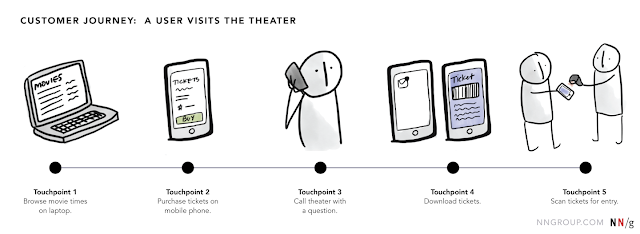A product evangelist I recently spoke to, as part of a technology forum asked, “Why do we need mobile apps?” At first, I got into an argument on how the mobile apps are changing the world. Changing the world – yes to some extent. But are mobile apps REALLY changing the world? Am I saying that creating another billion mobile apps will wash out out poverty, reduce crime, provide reasonable healthcare to senior citizens or other valuable benefits to the society? May be not. I kept wondering about this for next couple of days.
This article is not a justification to the million dollar question, “Why do we need mobile apps?” This is a view of how I think mobile apps can impact the world in its own way.
We need mobile apps for three reasons if not more:
- People are mobile and expect products to be accessible on the move
- Mobile app is another new channel
- Mobile app is a strong touchpoint in customer experience
Let us look at each one in detail.
People are mobile and expect products to be accessible on the move
Most of the mobile market growth is attributed to the increasing popularity of smartphones. The users are all over the smartphones. So where should the products be?
The products better be on the smart phones.
Consider Oracle, SAP and other enterprise giants. Each one has built a mobile offering in the past 10 years for better outreach to their customers and users.
Mobile app is another new channel
A channel is the medium of interaction between a customer and an organization. Mobile app is a key channel in today’s world.Each organization has its own set of relevant channels built over a period of time. Some prefer brick and mortar stores, while others are on the internet. Even on the internet, organizations are faced with the question of whether they must just have a a website or a mobile app, live chat support, chatbot or some latest technology offering. Take the example of Pepsi soft drink. Users can buy it from supermarkets, retail stores, order it from online marketplaces or vending machines placed in public places. Now, Pepsi might be faced with the challenge of adding a mobile app as an additional channel to users. Just adding a mobile app offering may not increase the sales right away, but it does become a new channel to users using mobile apps.
Note that adding a mobile app may or may not generate revenues in many industries. It is up to the organization to decide if adding a mobile app works well with the overall product strategy and if it can impact long term sales and revenues in a positive way.
Some organizations may even create their own unique channels to support their business. For example, Amazon’s dash buttons are Wi-Fi connected physical devices that allow users to reorder a product from Amazon with one press. Take a look at the video HERE.
Mobile app is a strong touchpoint channel in customer experience
During a customer journey, a user may interact with an organization several times using different channels. Each of these interaction instances represents a touchpoint between the customer and the organization.Customer touchpoint is the interface of a product or service with users before, during, and after a transaction. Touchpoints go a long way toward defining customer experience and an organization in general.
Consumer habits are changing to a mobile-first lifestyle. Everyone is a fingertip away. Take the example of airline travelers. 1 in 4 airline leisure passengers worldwide is mobile only. "Mobile only" passengers own smartphones and tablets, but not desktops/laptops. Given these insights, mobile app is a critical part of the customer touchpoint.
The users expect an omnichannel experience. Consider a simple traveler journey from flight shopping to the airport: Users search flights on the mobile app, continues flight booking process on the website, receives tickets over email, completes check-in on mobile app, receives boarding passes over email and mobile phone wallet, enquires about baggage allowance over chatbot (linked to the mobile app and/or website), asks specific questions using voice commands on the app, receives notifications about flight on the mobile app, books a taxi to the airport on the app and finally gets to the airport.
The above example is just one type of customer journey. Some users might book flights on the mobile app and perform other interactions on web/chatbot/email/toll free phone lines. The whole idea of plugging in the mobile app into the customer journey is not forceful in this context, rather the need of the hour because users *ARE MOBILE* most of the time.
What about Progressive Web Apps?
There is no denying that progressive web pages/apps, iOS app spotlight, Android app slices and other recent technologies are simplifying the complexities introduced by mobile apps (like download/install/uninstall hassle, offline availability etc). Having said that, one must note that newer technologies do not necessarily pre-empt older innovations all the time. Rather, some new technologies augment the value offered by older innovations and even take them to a higher level of value.
So, What's the Future for Mobile Apps
The future of mobile apps does not lie in adding to the existing trash pile of mobile apps in the market. The future lies in integrating mobile apps seamlessly into the daily lives so pervasively that they no longer need to be used by unlocking the phone, tapping on a few commands and waiting for them to respond. Take a look at this short video summarizing the work of the great David Rose.The future I believe in does not rely on how many websites, mobile apps, chatbots or phone channels are stitched together to onboard more users and charge them.
The future I believe in makes technology SO HUMANE that we humans do not have to open a laptop to access a website, or unlock a mobile phone to access an app or put your mouth close to a hardware device and make orders.
The future I believe in works so seamlessly that it almost seems HUMAN without challenging me on my intellect, emotions or privacy.
Sadly, today, we have left ourselves far far behind!
Fortunately, we have some humane things happening around us. Stay tuned!
NOTE: I am talking about the future of mobile apps in my upcoming talk, "Enchanting Experiences - The Future of Mobile Apps" at Sydney. If you are in Sydney, then come say Hi at Test Bash Australia 2018.
Is Sydney too far or too expensive? Take a look at an old version of this talk HERE.










